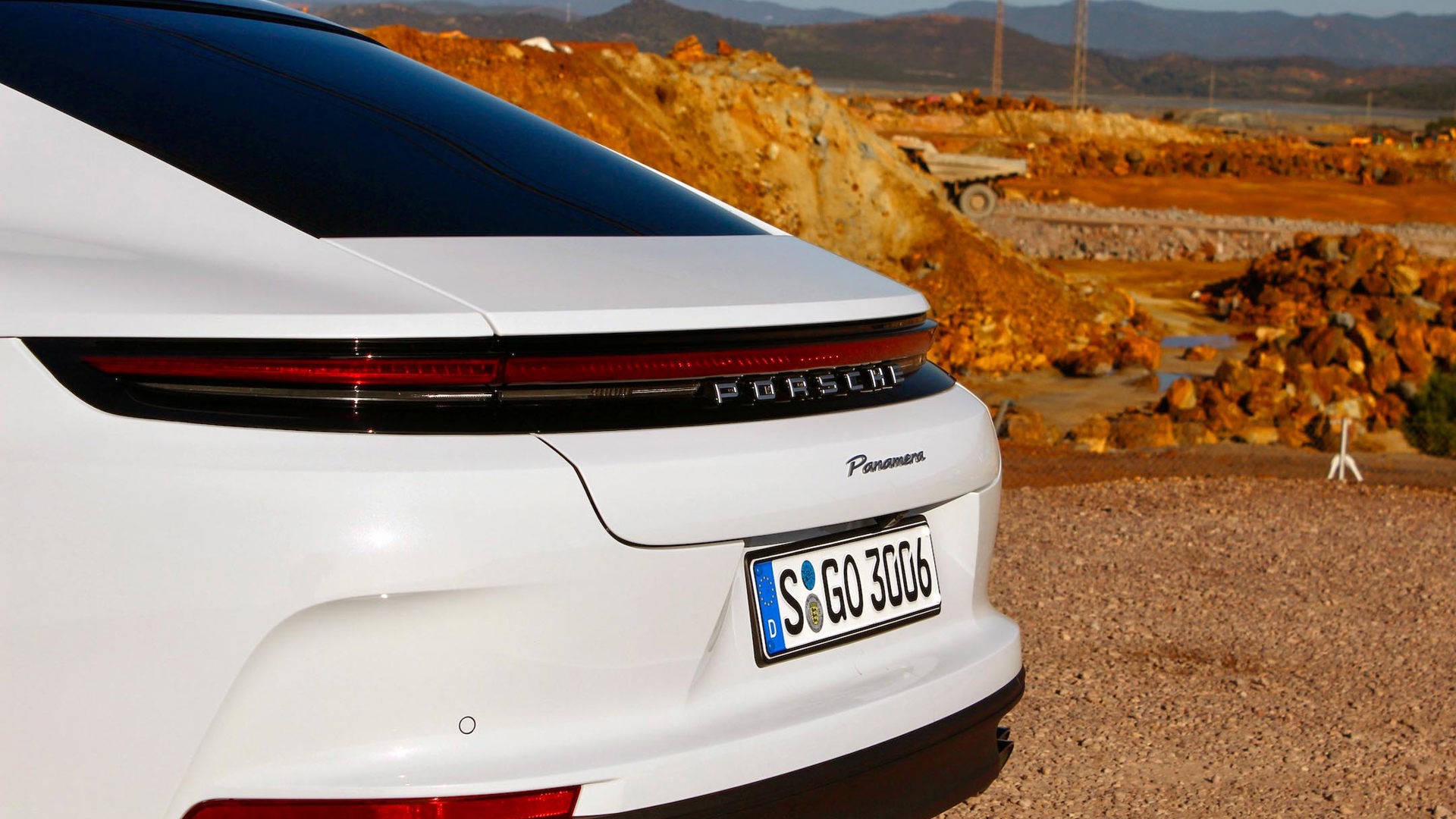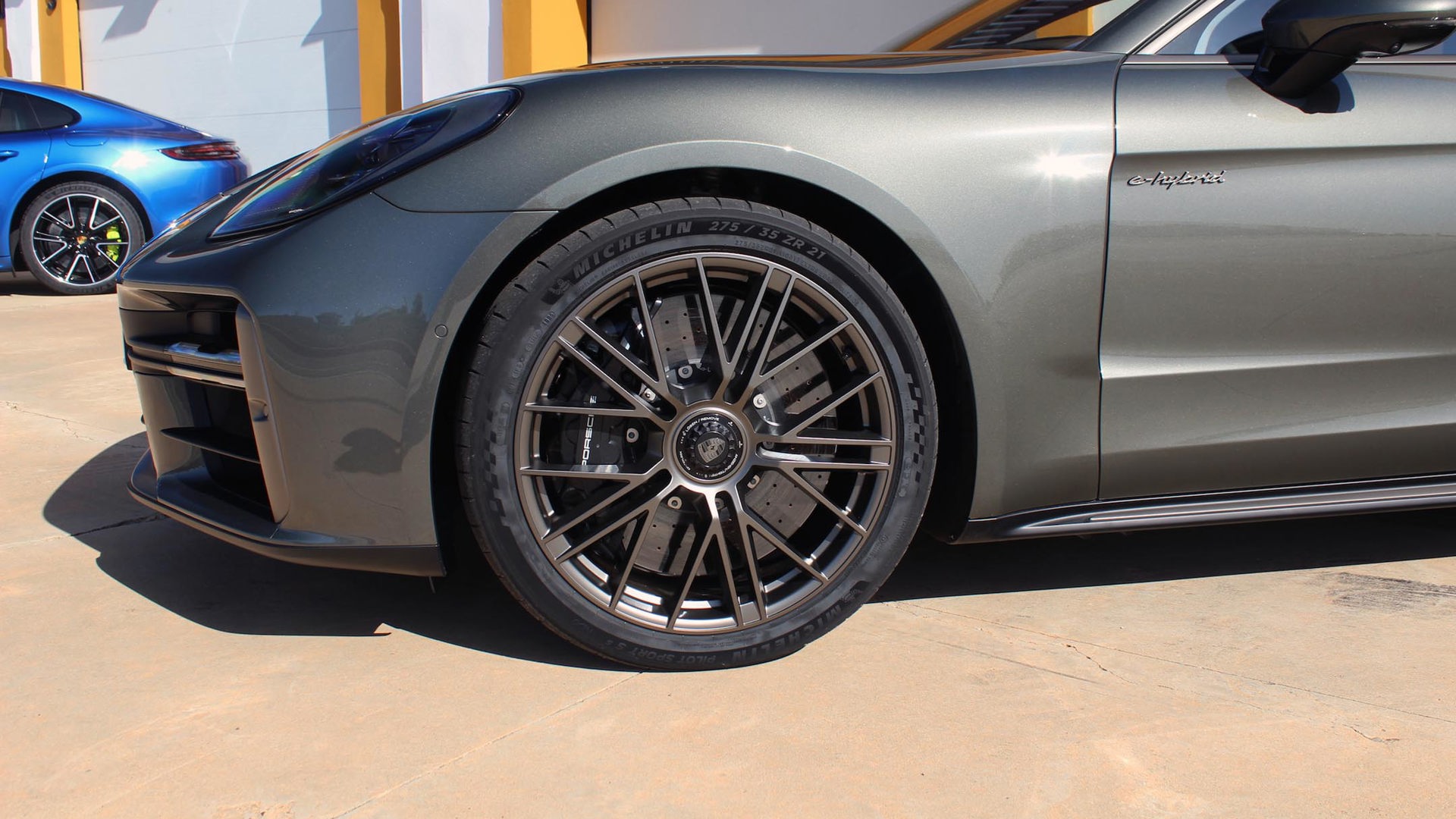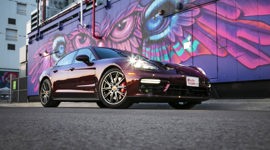Since its 2009 debut at the Shanghai Motor Show, the Porsche Panamera has resolutely danced to its own tune.
While this low-slung four-seat fastback plays in the same sandbox as the Mercedes-Benz S-Class, BMW 7 Series, and Audi A7, the Panamera has always been the most athletic of the lot, putting driver engagement, agility, track prowess, and – in the case of the Turbo models – outright speed at the top of its priority list. And while beautifully built and luxuriously appointed, the Panamera was never a cushy cruiser.
New Suspension

The overhauled 2024 Porsche Panamera arrives with a new standard two-chamber air suspension with two-chamber dampers (compression and rebound adjusted independently) along with standard Porsche Active Suspension Management (PASM). In the case of the plug-in hybrid (PHEV) models, a very trick active hydraulic suspension system dubbed Porsche Active Ride is available. Porsche claims it delivers the widest separation between sport and comfort. Rear axle steering is optional on all models, and the previous steel-sprung base suspension is no more.
Riding on the same platform as the previous car, the dimensions are unchanged this time, although it’s visually distinguished by new headlights, a bolder fascia with an extra air intake above the license plate, redesigned window line, and front fenders featuring defined arches that hint at those of the 911. Out back, there’s a new full-width lightbar, and the frameless hatch window is flush with the bodywork. And of course, there are new colours and wheel designs.
Hand-Me-Downs

Inside, the Panamera adopts the cabin architecture that debuted with the all-electric Taycan and carries over to the revised Cayenne. Hence, the gear selector has moved to the dash just to the right of the steering wheel, and most of the physical buttons have migrated to the trash bin.
Ahead of the driver is a 12.6-inch digital instrument cluster, with the central infotainment screen measuring 10.9 inches. There’s also an available 10.9-inch screen for the front passenger, giving access to vehicle functions, entertainment, and connectivity. The centre console sports a volume control, a haptic panel, and five toggles for climate functions, although air vent control must be accessed through the main touchscreen.
This is an exquisitely crafted environment, and while bereft of gimmickry and frivolity, it exudes timeless elegance and a sense of bulletproof functionality. All expected luxury items like seat massage and ventilation, high-end audio, semi-autonomous driving, and self-parking are available.
Slow Rollout

The entry-level Panamera uses a 2.9L twin-turbocharged V6 that, for 2024, gets a boost – 348 hp and 368 lb-ft of torque, up from 325 and 331, respectively. Hooked to the standard eight-speed dual-clutch automatic transmission, this base Panamera is a lively performer, and on smooth and winding roads it truly feels like it’s shrinking to sportscar proportions around you, such is the way it eagerly carves the bends with poise and balance, and communicates faithfully what’s happening at the contact patches. Porsche has developed its electrically assisted steering to perfection. Yes, the ride is still busy over most surfaces (the 21-inch low profile tires don’t help) and there’s more road noise than expected, but what a joy to drive.
The 2024 Panamera launches this spring as the rear-wheel-drive Panamera ($116,300) and the all-wheel-drive Panamera 4 ($120,600). Both use the updated 348-hp twin-turbo V6. Following these will be the 2025 E-Hybrid models that use the same 2.9L engine but with added electric propulsion – an electric motor integrated into the housing of the heavily updated eight-speed transmission makes 187 hp and 331 lb-ft of torque. The 4 E-Hybrid will pump out 463 hp and 476 lb-ft of torque, while the 4S E-Hybrid makes 536 hp and 553 lb-ft of torque.
Both use a 25.9-kWh battery. The 11-kW-onboard charger reduces charging time to two and a half hours in ideal conditions. Porsche claims up to 93 km of electric-only range, although these are European ratings, so expect the official North American numbers to be more conservative.
Then there’s the 2025 Turbo E-Hybrid. It pairs a revamped 4.0L twin-turbocharged V8 with the 187-hp electric motor. With its 25.9-kWh battery, total system output is a formidable 670 hp and 685 lb-ft of torque. With all four wheels driven, the Turbo E-Hybrid launches to 100 km/h in a claimed 3.2 seconds on its way to a top speed of 315 km/h.
Porsche Active Ride

The new Porsche Active Ride (PAR) hydraulic suspension system makes its debut in this sedan, and will soon find its way into other Porsche products. The system utilizes the same dual-piston dampers as the base Panamera but has powerful electric hydraulic pumps at each corner to control compression and rebound in real-time, thus eliminating the need for anti-roll bars. PAR requires so much juice to operate it is only available on the plug-in hybrid (PHEV) E-Hybrid cars with their 400-volt architecture, as a base 48-volt system isn’t enough to run it.
With a battery of sensors measuring wheel travel, body movement, and lateral and longitudinal forces at a thousand times per second, the system’s reaction time is scant 50 milliseconds. The object of the game is to keep the Panamera’s body completely flat at all times, be that under braking, acceleration, hard cornering, negotiating potholes, traversing speed bumps – you name it.
And yes, PAR delivers on this promise. And this is without a road-preview camera system. PAR also has the capacity to overcompensate by leaning into corners like a motorcycle, raising the car’s nose under deceleration, and dropping it when accelerating hard. This selectable function is designed purely for the comfort of the passengers (or at least for their entertainment) and has no performance benefits. It is available from 50 km/h to 200 km/h.
The Panamera Turbo E-Hybrid is a devastating weapon – fast, poised, and, fitted with the optional PAR, stays uncannily flat no matter what you throw at it. The V8 bellows quite spectacularly, too. Still, there’s no getting away from this big PHEV sedan’s 2,400-kg (5,291-lb) mass. Physics still rule, but Porsche’s latest suspension tech and these new 21-inch Michelin Pilot Sport 5 tires put up some serious opposition.
The mission of PAR is to create a plush drive while also expanding on the sedan’s performance capabilities, the latter having been proven on the track. While a road drive of the Turbo E-Hybrid wasn’t on the official media schedule, I managed to snag one and escape the track environs for a more realistic (albeit brief) assessment out in the real world. And while it does indeed swallow up bigger road imperfections – it’s quite eerie to approach a speed bump and have the Panamera glide over it, essentially unperturbed – the basic ride quality is still pitter-patter busy on less-than-perfect tarmac.
Final Thoughts

Despite its major suspension upgrades designed to improve comfort, the 2024 Porsche Panamera remains the sharpest, sportiest, and most driver-focused of German luxury sedans. And if the Turbo E-Hybrid’s 670 hp seems a tad shy for your liking, count on a Turbo S E-Hybrid that will crest 700 hp and teleport to 100 km/h in under three seconds.























